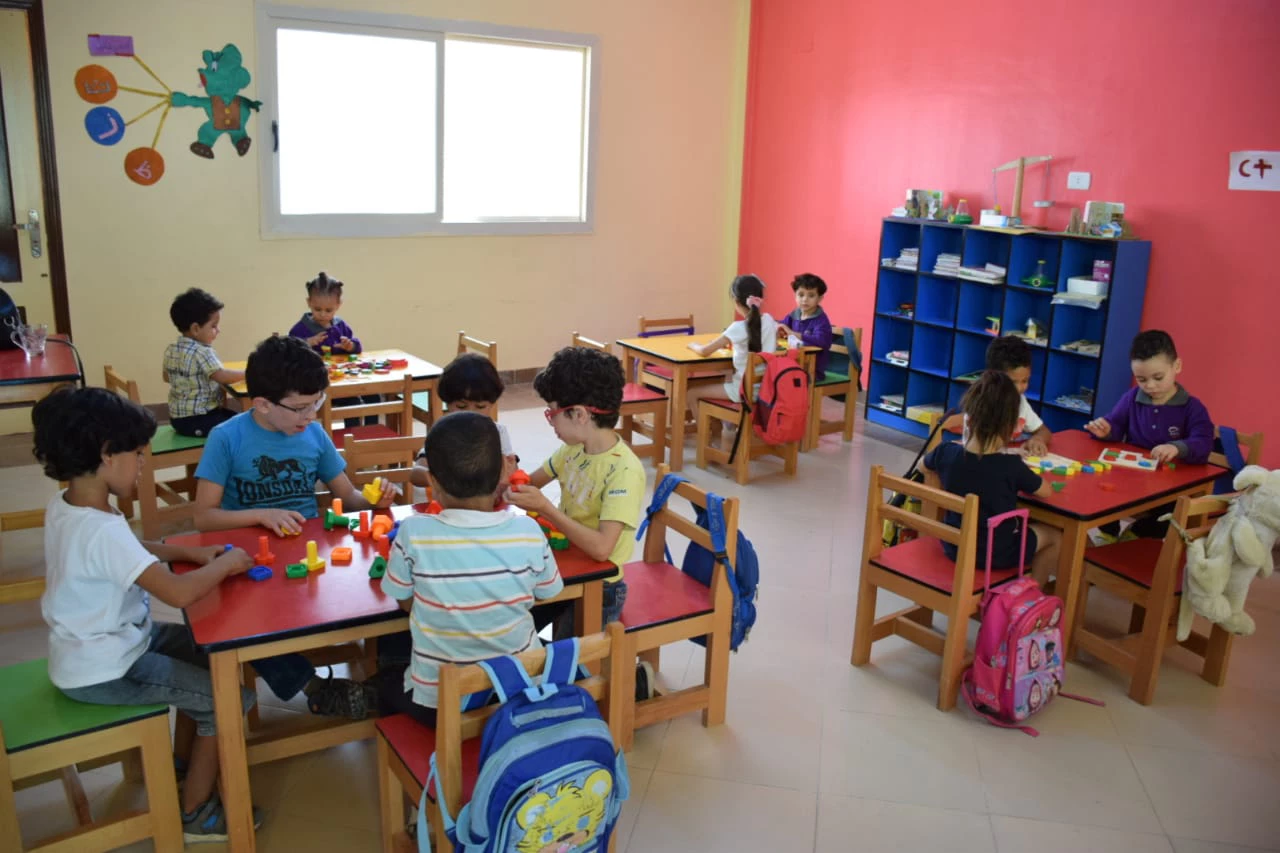 تلاميذ صغار يلعبون بأدوات تعليمية على طاولة دراسية في إحدى المدارس في مصر.
تلاميذ صغار يلعبون بأدوات تعليمية على طاولة دراسية في إحدى المدارس في مصر.
Access to quality childcare has the potential to unlock pathways out of poverty, build human capital, promote early childhood development, and increase equity. The narrative on the importance and relevance of access to childcare and its link to female labor force participation is gaining momentum, even more so after the COVID-19 pandemic.
The 2022 Women, Business and the Law Report which covers 190 economies shows how the enactment of laws and policies to make childcare available, affordable, and of decent quality can achieve better labor market outcomes for women, improve development outcomes for children, and increase economic growth. The report finds that the availability and regulation of childcare services vary widely across regions, and not always in clearly discernable patterns. Moreover, throughout the COVID-19 pandemic, women around the world have been driven out of the labor force, and this crisis exposed the huge, unmet need for affordable and quality childcare.
It is no different for Egypt; the lack of affordable childcare is one of the main obstacles preventing women from entering the labor market. Women in Egypt have experienced declining labor force participation rates over time. While women’s labor force participation rate was 27% in 2006, it fell to 21% by 2018 and to 14.3% in 2020.
With women undertaking disproportionate home/childcare work compared to men, it becomes difficult for women to engage in paid work outside the home, per a UN study. Coverage of childcare facilities is still limited. For nurseries overseen by the Ministry of Social Solidarity and catering for kids between age 0-4 years, the coverage stands at 8%. And for kindergartens overseen by the Ministry of Education and serving children between the age of 4-6 years old, the coverage stands at 31%.
In addition to lack of childcare, other key barriers to women’s labor force participation are the high opportunity cost of time, limited access to employment, and restrictive gender norms. Together with the Abdul Latif Jameel Poverty Action Lab (J-PAL) and funded by the World Bank MENA Gender Innovation Lab, an impact evaluation using randomized control trial was launched to test the impact of two potential interventions to address the above-mentioned constraints on women’s employment through childcare subsidies and employment services.
Childcare subsidies can alleviate care responsibilities and reduce the opportunity cost of women working. Employment services can help women find and match with jobs. These interventions have mixed effectiveness but may be particularly effective for women facing a constrained labor market.
Evaluation findings
The subsidies for childcare evaluated by our study offered to cover 25% and 75% of the actual cost of the nurseries fees, and still the results were fairly limited for women using them. Women who received only the 25% discount used the nursery vouchers only 1.4% of the time, but women who received only the 75% discount used the nursery vouchers 4.2% of the time.
Women in the study stated that nurseries were too far from home, despite the 2 km radius of nurseries offered, several lost their vouchers, and others believed that their children were still too young to attend nurseries.
The study evaluated the effect of employment services given through a recruitment platform (Forasna), facilitating job applications for women and helping to match them to vacancies based on their job criteria. The two measures of take-up of employment services were one, creating a profile, which is a strong sign of interest and seeking a job among women and two, actually applying for a job. 29.8% of women created profiles, and around half of them (13.9%) actually applied for jobs. Among women who did not use the employment services or did not apply, the most common reasons they stated were that their husband refused, not wanting to work, the location being too far, unmatched preferences for job characteristics, and no childcare available.
When asked what baseline jobs they would accept, very few women were willing to be drivers, outdoor sales, delivery, or agricultural workers, and even fewer were willing to be waiters or industrial workers, while less than half surveyed were willing to take white-collar jobs such as bank teller or teacher. The only jobs a majority would take were public sector work (72%) or administrative assistant work (56%).
Neither the subsidies nor employment services offered to women increased their job search behavior or appreciably changed the current working conditions, according to our study. Egyptian women, particularly married women with young children, face a whole constellation of barriers to employment. Relieving one or two constraints may be insufficient to allow women to work.
It is therefore essential that programs and policies to promote women’s employment in Egypt (and particularly married women’s employment) may likewise need a large package of interventions to simultaneously tackle a host of constraints, including not only the cost of childcare and employment services, but also gender norms, childcare quality, employer discrimination, and the fundamentals of labor demand.



Join the Conversation